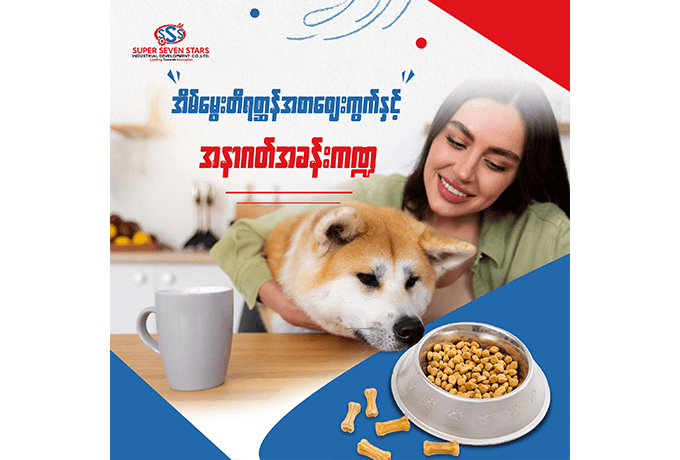The Growing Pet Food Market and Its Future Impact: Trends, Insights, and Opportunities
With the changing lifestyles, beliefs, and ways of living around the world, the importance of pet food has also significantly increased. The transformation of human attitudes, from simply caring for animals to nurturing them as part of the family, has contributed to the growth of the pet food market. Pet lovers aim to provide their pets with the best possible food to ensure their health and overall well-being, guaranteeing their pets’ longevity and vitality.
High-quality and reliable pet food ensures that beloved pets remain healthy, happy, and energized for daily activities. While the pet food is not categorized as human-grade, it is still regulated and classified under the food industry, ensuring its safety and quality for animal consumption. Pet food is categorized as a specialized product in the market. The demand for premium, high-quality pet food has surged, with consumers increasingly opting for higher-priced options that ensure the best nutrition for their pets.
Concerns about the health of our pets have grown, leading to the development and sale of healthier pet food options in the market. These products are free from sugar, grains, artificial colors, and synthetic additives, ensuring safer and more natural nutrition for pets. Pet owners carefully consider various factors when selecting and feeding their pets. They are well-informed and prioritize providing the best and safest nutrition for their pets. Ensuring that the pet food is of high quality and free from harm is a top priority for these pet lovers.
Despite the lack of specific proof from research, grain-free pet meals are becoming increasingly popular and readily available. To ensure trust in the pet food brands we choose for our pets, there is a growing preference for “Clean Label” products. These foods have been reliably connected to quality and safety for many years. Additionally, pet owners are mindful of selecting pet foods that help maintain their pets’ healthy weight and prevent obesity, carefully choosing foods that meet these criteria.
Pet owners are also careful to select pet food that helps manage their pets’ weight and prevent obesity. Biologically appropriate bones and raw foods are rich in high-quality protein and fresh fruits and vegetables. Nutritional supplementation is also essential to closely align with the natural dietary needs of pets. This approach ensures that the food provides the necessary nutrients for optimal health and well-being.
The primary products in the large pet food market are dog food and cat food. Other types of pet food available include rabbit food, bird food, horse feed, fish food, and specially formulated pet foods for specific needs.
Dog food, which is the leading product in the pet food market, is produced based on various factors such as food type, dog breed, body requirements, age, and size. Dry dog food is also produced and is available in a variety of types in the market, depending on the specific needs of puppies and adult dogs. Wet dog food and special dog food options are also manufactured to meet different dietary requirements.
Cat food is the pet food market’s second-largest section. Cat ownership is becoming increasingly popular across the world, owing to factors such as increased apartment living, the convenience of cheaper maintenance expenses, and cats’ independence. Cat food is created in a variety of formats based on food type, breed, dietary requirements, age, and the cats’ living environment.
Pet owners realize how important it is to provide their pets with proper nourishment. High-quality, nutritious pet meals not only improve pets’ general health and happiness, but also help them live long and active lives. Such foods promote lustrous coats, boost the immune system, and dramatically increase general health and well-being.
It is essential for pet owners to carefully select and provide nutritionally complete and trustworthy pet foods that meet their specific needs. Just as humans require adequate hydration, pets also need to maintain proper hydration levels to live healthy and vibrant lives.
Pet foods can be categorized into three types: dry, wet, and fresh. Dry food typically contains only 10% to 12% moisture, making it suitable for pets that drink less water. In contrast, wet food contains about 75% to 78% moisture and is a better option for those pets. Fresh pet food can also be stored safely in the freezer for optimal freshness.
It is essential to prevent obesity in pets. The food they consume must provide the necessary nutrition and energy for their bodily functions and physical activity. Ensuring a balanced diet is crucial for maintaining their health and preventing weight-related issues.
To ensure safety and quality, those who want to create and sell pet food must follow set norms and standards. It is critical that they develop processes that ensure customer confidence and reduce risks. Furthermore, raw material providers should be able to provide verifiable assurances of safety and dependability, which will increase trust in the items being supplied.
Pet food specifically produced for our beloved pets is currently available for purchase at major retail stores, supermarkets, and specialized pet shops. These products are designed to provide pets with precise nutritional value, appealing flavors, and complete safety, ensuring peace of mind for pet owners.
For businesses interested in manufacturing and distributing trusted pet food with modern technology and machinery support, Super Seven Stars Industrial Development can assist. You can reach them directly through their hotline at 09-940844255 or via email at info@sssindustrialdevelopment.com for further inquiries and support.

